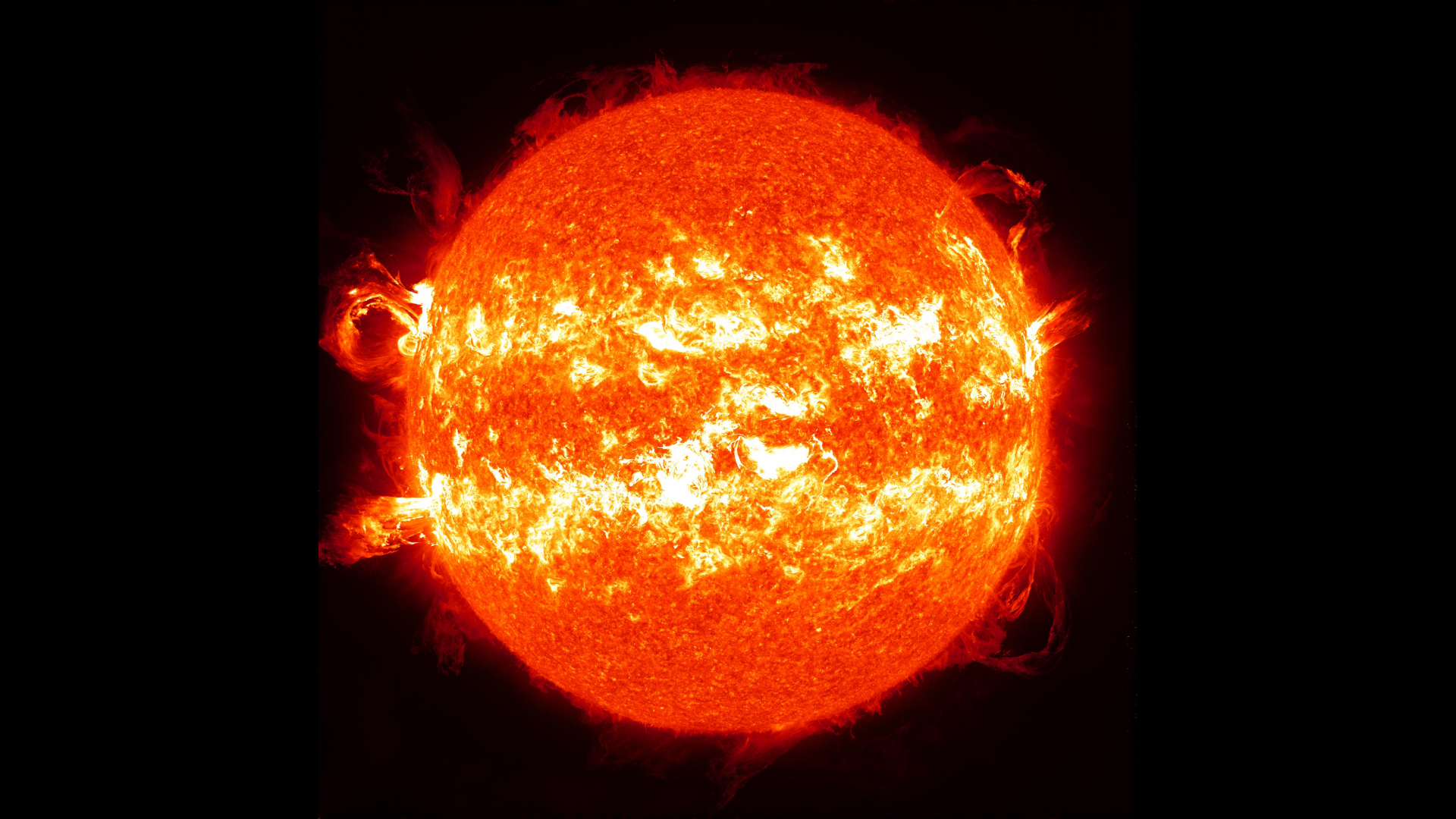
A NASA sun-studying probe celebrates four years in space this week, and the agency has released a stunning new video to mark the occasion.
The amazing new video of the sun, which NASA released Tuesday, is a greatest-hits set from the space agency's powerful Solar Dynamics Observatory (SDO), which is celebrating its fourth year in space. The video showcases some of SDO's most dramatic and beautiful images from the last 12 months.
The nearly four-minute movie includes footage of sunspots, solar flares— powerful blasts of light in X-ray and other wavelengths — and prominence eruptions, which send loops of solar material out into the sun's atmosphere.
NASA's Solar Dynamics Observatory blasted off from Florida's Cape Canaveral Air Force Station on Feb. 11, 2010, on a mission to study solar activity and help scientists understand how variations in that activity affect life here on Earth.
"Scientists study these images to better understand the complex electromagnetic system causing the constant movement on the sun, which can ultimately have an effect closer to Earth, too: Flares and another type of solar explosion called coronal mass ejections can sometimes disrupt technology in space," NASA officials wrote in a description of the video. nasa-sun-observatory-fourth-anniversary-video-sdo
SDO captures high-resolution views of the sun in 10 different wavelengths 24 hours a day, seven days a week. The probe records images of the solar atmosphere in unprecedented detail, researchers say.

SDO was designed to last a minimum of five years, but mission scientists hope it can keep observing for a while beyond that, providing an in-depth look at much of the sun's 11-year activity cycle. The space observatory launched during a relatively quiet period for the sun. The current cycle, known as Solar Cycle 24, is the weakest in a century or so, despite being in its active phase, researchers say.
Get the Space.com Newsletter
Breaking space news, the latest updates on rocket launches, skywatching events and more!
Follow Mike Wall on Twitter @michaeldwall and Google+. Follow us @Spacedotcom, Facebook or Google+. Originally published on Space.com.
Join our Space Forums to keep talking space on the latest missions, night sky and more! And if you have a news tip, correction or comment, let us know at: community@space.com.

Michael Wall is a Senior Space Writer with Space.com and joined the team in 2010. He primarily covers exoplanets, spaceflight and military space, but has been known to dabble in the space art beat. His book about the search for alien life, "Out There," was published on Nov. 13, 2018. Before becoming a science writer, Michael worked as a herpetologist and wildlife biologist. He has a Ph.D. in evolutionary biology from the University of Sydney, Australia, a bachelor's degree from the University of Arizona, and a graduate certificate in science writing from the University of California, Santa Cruz. To find out what his latest project is, you can follow Michael on Twitter.









